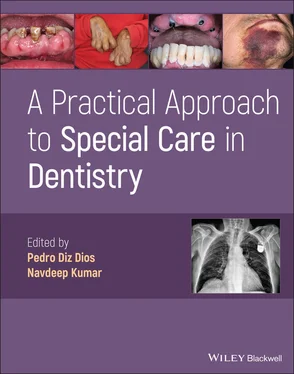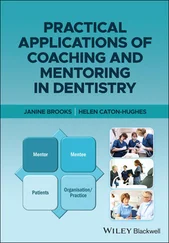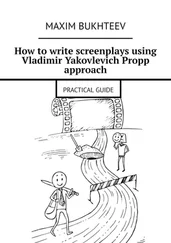A Practical Approach to Special Care in Dentistry
Здесь есть возможность читать онлайн «A Practical Approach to Special Care in Dentistry» — ознакомительный отрывок электронной книги совершенно бесплатно, а после прочтения отрывка купить полную версию. В некоторых случаях можно слушать аудио, скачать через торрент в формате fb2 и присутствует краткое содержание. Жанр: unrecognised, на английском языке. Описание произведения, (предисловие) а так же отзывы посетителей доступны на портале библиотеки ЛибКат.
- Название:A Practical Approach to Special Care in Dentistry
- Автор:
- Жанр:
- Год:неизвестен
- ISBN:нет данных
- Рейтинг книги:3 / 5. Голосов: 1
-
Избранное:Добавить в избранное
- Отзывы:
-
Ваша оценка:
- 60
- 1
- 2
- 3
- 4
- 5
A Practical Approach to Special Care in Dentistry: краткое содержание, описание и аннотация
Предлагаем к чтению аннотацию, описание, краткое содержание или предисловие (зависит от того, что написал сам автор книги «A Practical Approach to Special Care in Dentistry»). Если вы не нашли необходимую информацию о книге — напишите в комментариях, мы постараемся отыскать её.
Learn to treat dental patients with disabilities or who are medically compromised A Practical Approach to Special Care in Dentistry
A Practical Approach to Special Care in Dentistry
A Practical Approach to Special Care in Dentistry — читать онлайн ознакомительный отрывок
Ниже представлен текст книги, разбитый по страницам. Система сохранения места последней прочитанной страницы, позволяет с удобством читать онлайн бесплатно книгу «A Practical Approach to Special Care in Dentistry», без необходимости каждый раз заново искать на чём Вы остановились. Поставьте закладку, и сможете в любой момент перейти на страницу, на которой закончили чтение.
Интервал:
Закладка:
4 The foster parent explains that the child is being bullied at school because she looks different. What would you do?Discuss that improving the appearance of the child's teeth may not stop the bullying as the child may have other distinctive facial features of foetal alcohol syndrome which may appear different (small eyes, thin upper lip, short, upturned nose and a smooth skin surface between the nose and upper lip)Explain that the child is too young for dental extractions, orthodontics and/or orthognathic surgery to be planned (she is in the mixed dentition stage)She also has limited co‐operationThe most important focus is to acclimatise her to visiting the dentist regularly so that her oral health can be maintained and enable more invasive treatment at a later stageEncourage the foster parent to discuss the bullying with the school and social services
5 Tooth crowding in anterior sectors has promoted the localised accumulation of dental calculus. What factors would you need to consider when choosing the appropriate technique for removal of these deposits?Manual instruments (curettes) may be preferable to minimise the background noiseUltrasonic instrumentation can cause interference with hearing aids
6 The patient is not co‐operative for calculus removal. What factors are important to assess prior to the adjunctive use of inhalational sedation?
The nasal hood may not be tolerated or may have a further negative impact on communication
Sedation itself may further impede communication
The patient has developmental delay – it is important to consider her weight and height before deciding on the appropriate concentration
Risperidone and nitrous oxide both have CNS depressant effects
General Dental Considerations
Oral Findings
The prevalence of caries and the decayed, missing and filled teeth (DMFT) index in children with deafness are determined by their age, socio‐economic level and educational level of their parents
Children and adolescents with and without auditory deficit, whose oral health is supervised, have a similar prevalence of caries
An increased rate of dental trauma has been reported, especially among males with deafness
Dental Management
It is important to determine the best method for communicating with the patient that ensures that they understand when explaining oral hygiene techniques, dental procedures and treatment plans ( Table 3.2.1; Figure 3.2.3) Figure 3.2.3 Orthodontic treatment for a patient with craniofacial dysostosis and associated hearing loss (Treacher Collins syndrome).
Section II: Background Information and Guidelines
Definition
Deafness is the difficulty or inability to use the sense of hearing due to a partial (hearing loss) or total (cophosis) unilateral or bilateral loss of auditory capacity. It is estimated that 7% of the population has an incapacitating hearing loss. Deafness affects men and women equally, and its prevalence increases with age. The condition is classified according to the anatomical area where the injury is located, the degree of hearing loss and the age at onset ( Table 3.2.2).
Aetiopathogenesis
The most common causes for conductive auditory deficit are congenital craniofacial disorders, infections and trauma ( Table 3.2.3) Table 3.2.1 Considerations for dental management.Risk assessmentDepending on the onset, degree of hearing loss, type and aetiology, (may impact on intellectual development) and/or the capacity for expression and speechCochlear implants are susceptible to electromagnetic interference and can be damaged by excessive electricity, including monopolar diathermy in the head and neck region or bipolar diathermy within 2 cm of the implantCoexistence of other diseases which have led to the hearing lossCriteria for referralReferral to a specialised clinic or hospital centre is rarely required and will be determined by the presence of comorbidities (e.g. polymalformative syndromes)Access/positionDistrust of dentists and anxiety are commonSome patients with auditory deficits can experience positional vertigo (e.g. Ménière syndrome)CommunicationPatients with mild deficits, those who wear hearing aids/cochlear implants and those who can lip read:Stand/sit at an appropriate distance from the patientPosition yourself where the patient can clearly see your face/lipsTalk with the face uncovered or use a transparent facemaskKeep the head fixed and talk slowly without raising the tone of voiceSpeech should be adapted to the patient's sociocultural level and ageIf possible, avoid intermediaries in the conversationPatients with severe auditory deficit (untreatable):Use other senses (vision and feel) to facilitate communicationUse mirrors, models, drawings and written languageUse sign language if you are able to (although it is not universal) or mimeUse a sign language interpreter if appropriateConsent/capacityIn order to confirm that the patient understands all the information that appears in the consent form and can ask any questions they have, select the most appropriate communication system to be employed (use a sign language interpreter if necessary)For those who also have a visual deficit, it is essential additional adaptations are in place (e.g. consent form printed in sufficiently large type or a Braille version available)If the patient cannot read, a close family member/friend acting as a witness can read it for them if hearing is sufficientIf it is not possible for the patient to communicate their decision using alternative adjuncts/methods, a best interest decision may be requiredAnaesthesia/sedationLocal anaesthesiaThere are no specific considerationsSedationThere may be difficulties monitoring the level of consciousness when performing conscious sedationGeneral anaesthesiaEnsure that the chosen method of communication is effective and communicated to all the theatre and recovery staffDental treatmentBeforeBackground noise should be reduced as much as possibleEnsure lighting is adequate to allow the face to be clearly seenConsider the use of signs and pictures to communicateTransparent facemasks and face shields help lip readingDuringThe ‘tell–show–feel’ (physical contact) technique may be appliedRotary and ultrasonic instrumentation can cause interference with hearing aidsElectrocautery should not be employed in patients with cochlear implantsDrug prescriptionAminoglycoside antibiotics and macrolides are ototoxic and should be avoidedA number of drugs such as metronidazole, clindamycin and indomethacin can cause reversible hearing disorders (e.g. tinnitus)Education/preventionOral hygiene is frequently poor, and oral hygiene habits are often inadequateEffective communication is a key factor in oral health education plansIn view of this, some countries have proposed requiring sign language in their dental curriculumDietary counselling is essential (high consumption of sugar and carbonated drinks has been described among patients with deafness) Table 3.2.2 Auditory deficit classification.CategoryClassificationLesion locationConductive or transmissive hearing loss (external ear, middle ear and labyrinth)Sensorineural or perceptive hearing loss (internal ear, auditory nerve and temporal lobe)MixedDegree of hearing lossMild (detects sounds between 25 and 29 dB)Moderate (detects sounds between 40 and 69 dB)Severe (detects sounds between 70 and 89 dB)Profound (detects sounds above 90 dB)Age at onsetPrelingual (before the development of speech)Postlingual (after the development of speech) Table 3.2.3 Auditory deficit aetiology.AgeClassificationPrenatalInfections (rubella, syphilis, toxoplasmosis, HIV)HypothyroidismHypertensionOtotoxicityGenetic (craniofacial dysostoses, family history)Polymalformative syndromesPerinatal/neonatalPrematurityLow birthweightTraumaInfections (herpes simplex, cytomegalovirus)Jaundice (kernicterus)HypoxiaChildhoodInfections (otitis media, mumps, measles, malaria, meningitis)AdolescenceOtotoxicityForeign bodiesExposure to noiseTraumaMénière syndromeAdulthoodPresbycusisOtotoxicityOtosclerosisInfections (otitis media, encephalitis, meningitis) Figure 3.2.4 An audiogram shows the quietest sounds a patient can just hear.
Читать дальшеИнтервал:
Закладка:
Похожие книги на «A Practical Approach to Special Care in Dentistry»
Представляем Вашему вниманию похожие книги на «A Practical Approach to Special Care in Dentistry» списком для выбора. Мы отобрали схожую по названию и смыслу литературу в надежде предоставить читателям больше вариантов отыскать новые, интересные, ещё непрочитанные произведения.
Обсуждение, отзывы о книге «A Practical Approach to Special Care in Dentistry» и просто собственные мнения читателей. Оставьте ваши комментарии, напишите, что Вы думаете о произведении, его смысле или главных героях. Укажите что конкретно понравилось, а что нет, и почему Вы так считаете.












